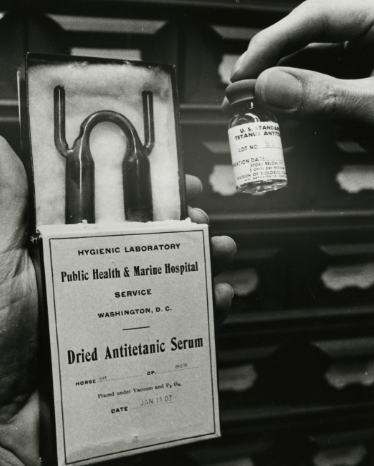Introduction to the article
Tetanus, a word that brings to mind sharp pains and grim realities, is often misunderstood. But what if we told you it goes tetanus by another name nyt in different parts of the world? This disease has a rich history intertwined with discovery and misconceptions. As we embark on this journey of understanding, you’ll learn not only about the symptoms and origins of tetanus but also hear personal stories from those who’ve faced its challenges. Medical experts will share their insights into prevention and treatment strategies currently shaping global health efforts. Join us as we unravel the complexities surrounding tetanus—by any other name—and explore why this ancient ailment still matters today.
Overview of Tetanus and its symptoms
Tetanus, often referred to as lockjaw, is a serious bacterial infection. It’s caused by *Clostridium tetani*, which thrives in environments with low oxygen. This bacterium typically enters the body through wounds.
Symptoms can appear anywhere from days to weeks after exposure. One of the earliest signs is stiffness in the jaw muscles. As the infection progresses, muscle spasms can spread throughout the body.
Patients may experience difficulty swallowing and intense pain during these spasms. In severe cases, it might lead to complications affecting breathing or heart function.
Awareness of these symptoms can be vital for early intervention. Tetanus isn’t just an outdated concern; it’s still relevant today and demands attention.
The history and discovery of Tetanus
Tetanus has a fascinating history that dates back to ancient times. The condition was recognized long before its causative agent, Clostridium tetani, was identified. Ancient Greek texts described symptoms resembling those of tetanus, yet the name itself did not emerge until much later.
The bacterium responsible for the disease was discovered in 1884 by German physician Arthur Nicolaier. His work laid the groundwork for understanding how this microorganism thrived in anaerobic environments like deep wounds.
As scientists delved deeper into its mechanics, they found that C. tetani produces a potent neurotoxin called tetanospasmin. This toxin disrupts nerve signals and causes muscle stiffness and spasms—a hallmark of the disease.
Research continued throughout the early 20th century, enhancing our grasp of both prevention and treatment methods. Each breakthrough added layers to our understanding of this seemingly simple but complex illness.
Misconceptions about Tetanus and its name in different countries
Tetanus often comes with a fog of misunderstandings. Many believe it’s merely an old-world disease, relics of the past. However, tetanus remains a pressing health concern in various regions.
The name itself varies widely across countries, leading to confusion. For instance, in Spanish-speaking areas, it’s referred to as “tétano,” while French speakers call it “tétanos.” These linguistic differences can obscure awareness and education about prevention.
In some cultures, tetanus is mistakenly linked solely to deep wounds or animal bites. This overlooks the fact that even minor cuts can pose risks if they’re contaminated with the bacteria responsible for this illness.
Additionally, there’s a common myth that vaccination isn’t necessary after childhood. Each individual needs boosters at regular intervals throughout life—this misconception endangers many who think they’re immune forever just because they were vaccinated once long ago.
Personal stories and experiences with Tetanus from around the world
Across the globe, stories of tetanus resonate deeply. In rural India, a farmer recalls how a simple cut from working in the fields turned into a life-threatening ordeal. The struggle for treatment was as challenging as managing his pain.
In Brazil, a young woman’s battle with tetanus began after stepping on a rusty nail during carnival preparations. Her vibrant spirit dimmed under the weight of illness, but her recovery sparked newfound awareness among her community about vaccination.
Then there’s an elderly man from Nigeria who shares how he lost his brother to this preventable disease due to lack of access to vaccines. His experience ignited local campaigns aimed at educating families about prevention.
These personal narratives highlight not just individual trials but also underline cultural differences in understanding and dealing with tetanus across nations.
Insights from medical professionals on treating and preventing Tetanus
Medical professionals emphasize the importance of vaccination in preventing tetanus. The DTaP vaccine protects children, while Tdap serves as a booster for adolescents and adults. Staying updated with these shots is crucial.
In case of injury, doctors advise immediate care. Cleaning wounds thoroughly can significantly reduce infection risk. If unsure about vaccination status or if the wound is deep, seeking medical attention promptly is essential.
Treatment options vary based on severity. Mild cases may require simple wound care, while severe infections could necessitate antitoxin administration and hospitalization.
Doctors also stress awareness during travel to high-risk areas. Knowing where outbreaks occur helps people take necessary precautions.
Education plays a key role too. Many still have misconceptions about tetanus transmission and symptoms; clear information can save lives and prevent suffering from this dangerous disease.
Current efforts towards eradicating Tetanus globally
Global health organizations are ramping up efforts to combat tetanus, particularly in regions where the disease remains prevalent. Vaccination campaigns play a crucial role in these initiatives. Health workers mobilize communities,tetanus by another name nyt ensuring that mothers and newborns receive timely immunizations.
Partnerships between governments and NGOs have proven effective. They focus on raising awareness about prevention methods. Education is key; informing people about hygiene practices helps reduce the risk of infection.
In addition, access to clean birthing conditions remains a priority. For many remote areas, this means providing essential resources like sterile equipment and trained birth attendants.
Research into new vaccines continues as scientists seek innovative solutions to enhance immunity against tetanus strains. These combined efforts reflect a global commitment towards eliminating this preventable disease once and for all. The world is moving closer to a future without tetanus-related deaths through collaboration and community engagement.
Conclusion:
The journey through the world of tetanus reveals much about our understanding of this disease. It’s not just a medical condition; it’s intertwined with history, culture, tetanus by another name nyt.
From its symptoms to how it’s perceived globally, tetanus carries varying names that reflect local contexts and misconceptions. Each story shared by those affected adds depth to our understanding—reminding us that behind every statistic is a person facing fear and uncertainty.
Medical professionals continue to advocate for prevention through vaccinations while researching effective treatments. Their work is vital in mitigating the impact of tetanus worldwide. As health organizations ramp up efforts towards eradication, tetanus by another name nyt.
This exploration leaves us with significant questions: How can we better educate communities? What more can be done to ensure everyone has access to vaccines? The answers may shape future responses to this age-old problem in ways yet unseen.


